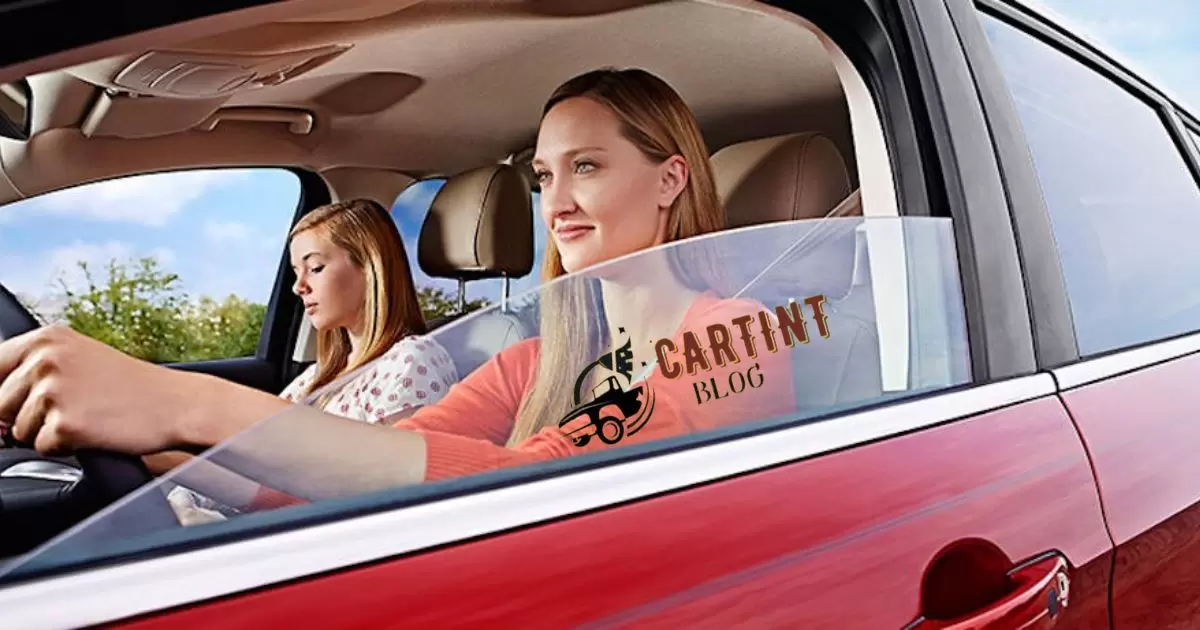Window tinting for vehicles is extremely popular, especially in hot climates. With scorching summer heat, many drivers look for ways to reduce the interior heat in their cars. But does applying window tint actually help lower temperatures?
Window tint is a thin film that is applied to the interior glass surfaces of a car. It is designed to block or reflect certain types of solar radiation from entering the vehicle. There are a few different types of window tints that function in various ways. Some absorb more heat, while others reflect it away. High quality tints are engineered to reject up to 60-80% of the sun’s infrared rays that transmit heat.
Studies have shown interior vehicle temperatures can reach upwards of 130-170°F on hot sunny days. But using a heat rejecting window tint can lower interior temperatures by over 50 degrees. So if you’ve ever felt like you were baking inside your car, window tinting is an affordable and effective solution. Quality tint films these days are scratch resistant, fade resistant, and made to last for years.
Does Window Tinting Reduce Heat in Cars?
Window tinting is an extremely popular car modification for good reason – it can make a dramatic difference in heat reduction inside vehicles. By rejecting sunlight before it passes through the glass, quality tint films are very effective at keeping car interiors cooler.
Benefits of tinting for heat reduction:
- Lower interior temperatures
- Increased comfort while driving
- Reduced reliance on A/C
- Protects interior from sun damage
However, the level of heat rejection depends heavily on the specific type of tint used. To understand how tint tackles heat, we first need to break down the solar spectrum.
The Solar Spectrum and Infrared Rays
Sunlight contains a wide spectrum of radiation, including:
- Visible light – What our eyes perceive as brightness/color
- Ultraviolet (UV) rays – Can cause sunburns and skin cancer
- Infrared (IR) rays – Felt as heat from the sun
While UV protection is also important, infrared rays make up over 50% of solar energy and are primarily responsible for heat buildup.
This is why I fix my car window tint using quality tint films. These advanced constructions not only provide superior infrared (IR) rejection but also play a key role in keeping your car cooler, especially when exposed to direct sunlight.
Heat Rejection and Total Solar Energy Rejected (TSER)
The most important metric for heat blocking ability is Total Solar Energy Rejected (TSER). This measures what percentage of total solar radiation a window film blocks across UV, visible light, and infrared spectrums.
For example:
- A film with 30% TSER blocks 30% of total solar energy
- One with 50% TSER blocks 50%
So when comparing heat rejection between tints, the TSER percentage is the ultimate indicator.
Higher TSER films cost more, but provide better cooling performance. Many quality ceramic or nano-ceramic films now reach 70%+ TSER to maximize heat blocking.
Major Tint Types and Heat Comparison
There are 5 main categories of tint – each using different construction and materials to filter sunlight.
Dyed Tint
The most affordable and basic option. Dyed films are plastic sheets with added color dyes and do not contain reflective abilities.
TSER
- Typically 20-45%
- Lower heat rejection
Cost
- $100-250 average car
Hybrid Tint
Hybrid mixes non-reflective dyed layers with highly reflective metal layers. This improves heat blocking at a moderate price point.
TSER
- Ranges 35-55%
- Good heat rejection
Cost
- $150-300 average car
Metallized Tint
Metallized tint uses microscopic metal particles to better reflect solar energy. This can provide enhanced IR rejection compared to dyed films.
TSER
- Around 50-60% generally
- Very good heat blocking
Cost
- $250-400 average car
Ceramic Tint
Ceramic particles are integrated into the tint layers and tuned to filter infrared rays. Combined with metal layers, ceramic tint delivers superior heat protection.
TSER
- Typically 60-75%+
- Among best IR blocking ability
Cost
- $400-600 average car
Nano-Ceramic Tint
The newest advancement using nanotechnology to integrate tiny ceramic particles. Provides exceptional IR rejection that can rival windshield heat blocking.
TSER
- Up to 80% rejection
- Maximum heat protection
Cost
- $500-800+ average car
So in summary, as the price goes up from basic dyed to nano-ceramic tints, more infrared rays are rejected and interior heat is reduced.
Real-World Temperature Testing
Independent tests help verify manufacturer TSER claims by measuring interior temps of tinted vs untinted cars:
- One test saw average heat reduction of 15-20°F with quality ceramic tint
- Another recorded drops from 167°F to 133°F after professional nano-ceramic installation
So while TSER provides the rating, real-world numbers demonstrate a very tangible cooling effect.
Additional Factors Affecting Heat Blocking
Beyond TSER, a few other considerations can impact overall performance:
Film Thickness
Thicker tint films often hold up better over time and reject marginally more heat. Many quality brands use thicker, multi-layer polymer construction with thickness from 1.5 up to 9 mil.
Tint Percentage (VLT)
This measures visible light transmission – how dark the tint appears. While not directly tied to IR blocking, darker tints can provide incremental heat protection simply by reducing overall light passing through.
Installation Quality
A perfectly installed tint with full adhesion and no gaps or bubbles will maximize heat rejection across all windows. So professional installation is recommended for best performance.
Which Areas to Tint for Heat?
Windshield
- Provides massive solar heat gain
- Significant cooling benefit if tinted
Front Side Windows
- Account for 50%+ of car heat gain
- Big impact on interior temps
Rear Windows
- Offer additional heat protection
Sunroof
- Major contributor to heat if untinted
- Prevents hot sun rays through opening
So for optimal cooling, all glass areas should be addressed including the windshield. But start with the most problematic first.
Other Benefits Beyond Cooling
Beyond beating the heat, some other advantages of quality tint include:
- UV ray protection from sun damage
- Glare reduction and increased visibility
- Added privacy
- Enhanced appearance
- Potentially lower A/C costs
- Less interior fading
So it serves several purposes beyond cooling alone.
Downsides of Tinting
Potential drawbacks to consider:
- Higher upfront cost
- Extra maintenance to keep clean
- Risk of bubbling over time
- May be illegal in some states if too dark
And improper installation can negatively impact appearance and performance. So the pros generally outweigh the cons with professional grade films.
Conclusion
Quality window tinting makes a very noticeable difference in interior vehicle heat levels through infrared ray rejection. Tests show average reductions between 15-20°F are realistic with high performance films.
Among major types, ceramic and nano-ceramic offer the best heat protection due to higher Total Solar Energy Rejected (TSER). And when covering all glass areas, temperature drops can be even more significant.
So in hot climates, heat blocking window tints provide an affordable and effective cooling solution. Just be sure to choose reputable products matched to your needs and budget.




